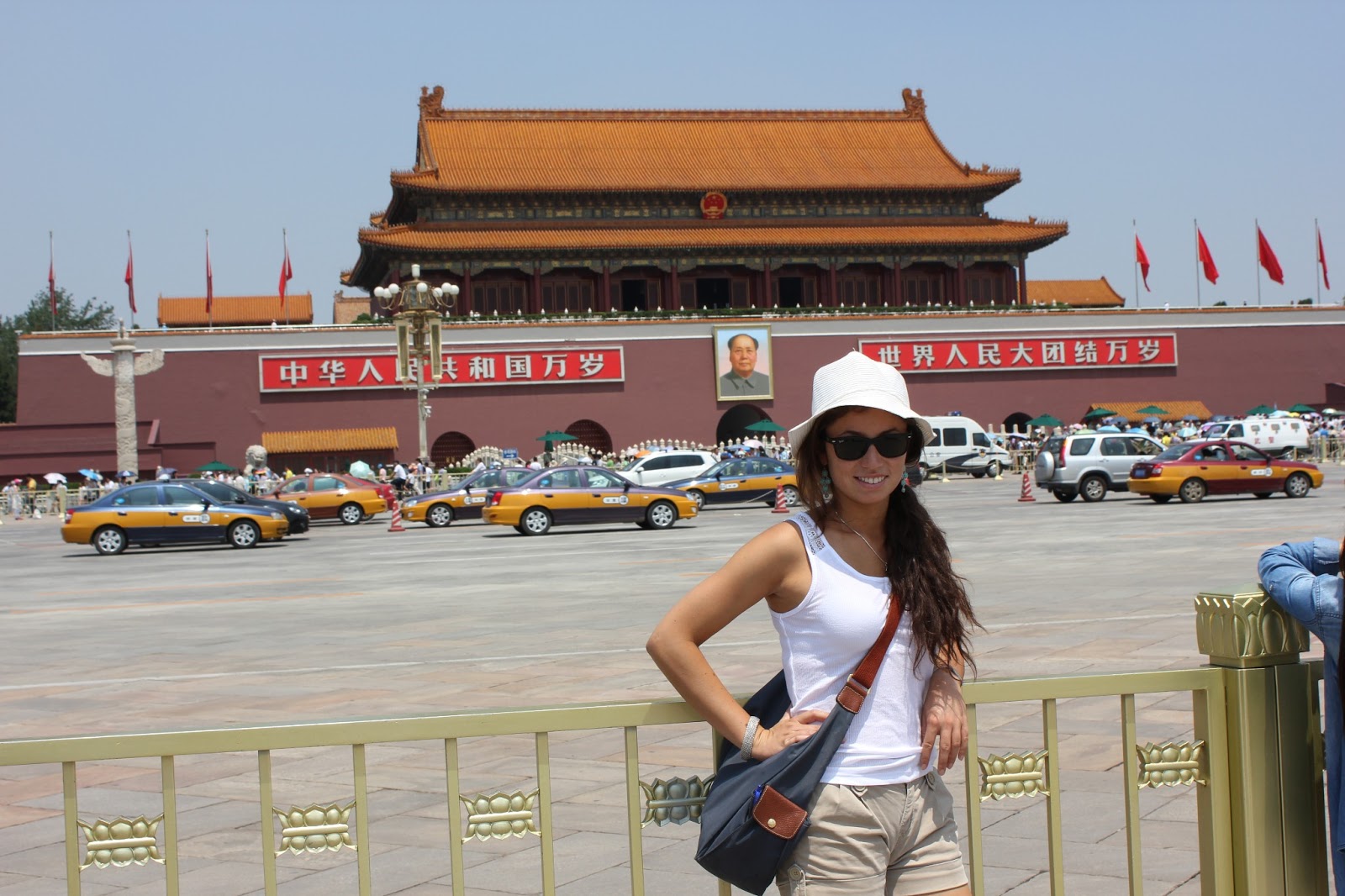A lot happened today, so I will write two separate posts for this memorable day.
We woke up earlier than yesterday, so hopefully we're finally transitioning to Beijing time. However, we still did not wake up early enough for breakfast, so we had brunch:
Then Cece and I took the metro to Tiananmen Square. My bad went through three x-ray scanners today and the metro entrance was the first instance. Every metro entrance requires scanning all bags. I, being the very prepared traveler, had a metal spork and a leatherman (an amazing multitool with some pretty serious blades) in my innocent purse. They got detected. Security was only worried about the leatherman and Cece somehow convinced them that I carry it around to peel fruit. We got through metro security. I'm happy they didn't ask about the spork. I'm not sure what I would have said to Chinese security.
Just out of the metro, we had to put our bags through another x-ray in order to enter Tiananmen Square. this time I put the leather man in my pocket and moseyed by the x-ray machine as it scanned my bag.
First gate to Inner City.
Public toilets: bring your own napkins!
The Monument to the People.
This flag is raised and lowered with the sun.
Tiananmen Square is at the heart of the Chinese government. This is also the site of the 1989 prodemocracy revolt. Its shut down on June 4 led to the establishment of martial rule in Beijing. This place is teeming with secret police.
While taking photos myself, a Chinese man came up to me and started poking me. It turned out that he wanted to get a picture of me because I'm white.
By the Square I saw the Hall of Poeple and the Monument for the People which is supposed to be the largest monument in Beijing and is dedicated to all of the Chinese people who fought for their country, starting with the Opium Wars.
The Northern end of the Square is bordered by the South wall of the Forbidden City. The gate in this wall is the Heavenly Gate (the gate on the North Wall is the Earthly Gate and leads to the lake that we were at yesterday).
More x-ray security, more leatherman-in-pocket-moseying.
The forbidden city was where the Emperor and his court lived. It is the largest palace built. Traffic between the rest if the world and the Forbidden City was prohibited. The palace was built in the 1400's under the Ming Dynasty and it served as the palace for about 500 years, serving the Ming and Qing Dynasties up to the early 1900's when power changed.
It takes three walls to get to the heart of the Forbidden City. It is organized symmetrically about a North-South axis. The Emperor is at the center so ll staircases on this axis had a strip with dragon carvings on which the Emperor walked. Yellow is the royal color and the dragin is the royal animal, so tje roofs were of yellow tile and dragons showed up everywhere.
The Emperor's Walk.
A throne.
The Emperor's staircase.
I found an AC!
These cauldrons collected water to extinguish any possible fires. This one was gold-plated. During the Opium Wars, the enemy scraped off most of the gold.
The Northeast guard tower.
Now here are some photos from or walk back before we began the second part of this big day.
Modern transportation.
Chinese chess.
Street food.
A residential district.
Cheers,
Nina.

































You should add some photos of Cece's place. It sounds nice!
ReplyDeleteDid you find/explore any of the remaining hutong districts?
ReplyDelete